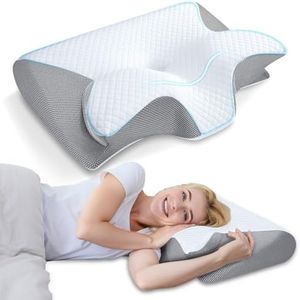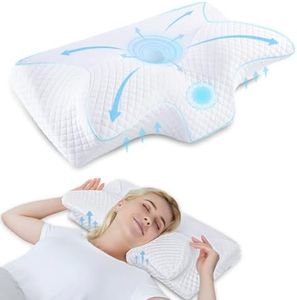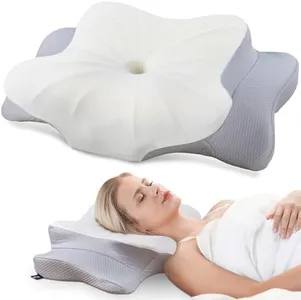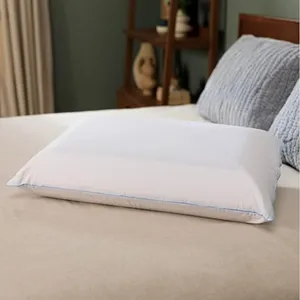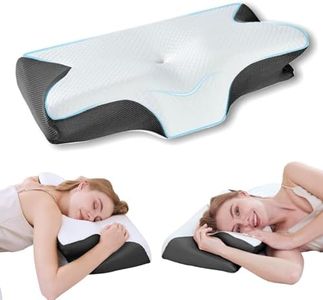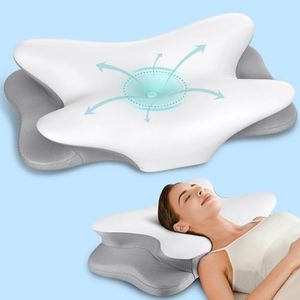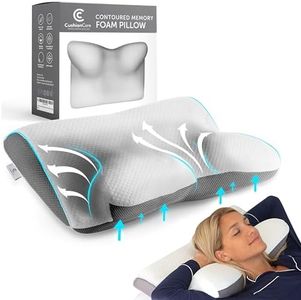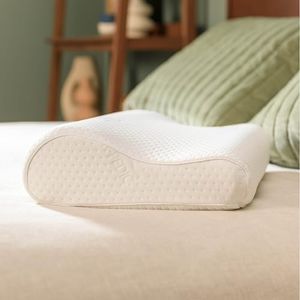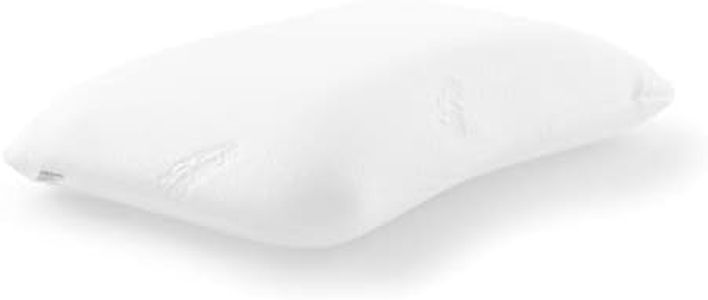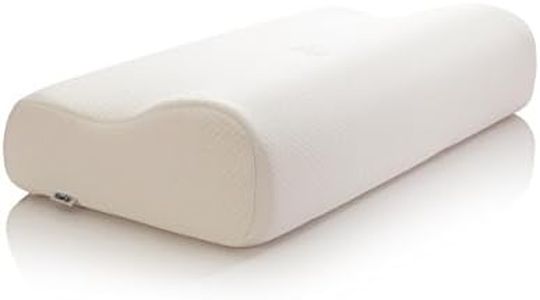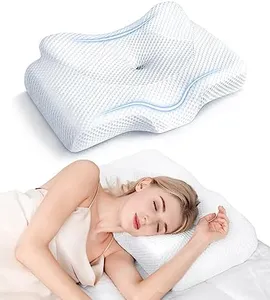We Use CookiesWe use cookies to enhance the security, performance,
functionality and for analytical and promotional activities. By continuing to browse this site you
are agreeing to our privacy policy
10 Best Cervical Pillows
From leading brands and best sellers available on the web.By clicking on a link to a third party's website, log data is shared with that third party.
Buying Guide for the Best Cervical Pillows
Choosing the right cervical pillow is all about making sure your neck is properly supported while you sleep, which can help reduce pain and improve sleep quality. Everyone's body and sleeping habits are a bit different, so it's important to pay attention to how a pillow's design and material will match your personal needs, especially if you suffer from neck pain or want to prevent it. Think of factors like your usual sleep position, the shape of your body, and any health concerns you might have. A good cervical pillow won’t just provide comfort for one night—it will help you wake up feeling refreshed and free of tension in your neck and shoulders.Pillow ShapePillow shape refers to the outer design and contour of the pillow. Cervical pillows usually come in various ergonomic shapes, like butterfly, wave, or cervical roll, that are intended to fit the natural curve of your neck. The importance of the shape lies in its ability to keep your spine aligned while you sleep, which can ease or prevent neck pain. If you sleep on your back, a wave-shaped or contour pillow can help maintain the curve of your neck, while side sleepers might prefer higher contours to fill the space between shoulder and head. Consider how you usually sleep and try a shape that supports your position best.
Loft (Height)Loft, or pillow height, is about how thick or tall the pillow is when it’s lying flat. This matters because the right loft keeps your spine straight while you sleep, preventing stiffness or pain. Low loft pillows are typically less than 3 inches thick, good for stomach sleepers. Medium loft pillows are between 3 to 5 inches and suit most back sleepers. High loft is more than 5 inches and is best for side sleepers with broad shoulders. To pick the right one, think about your main sleep position and your body size—side sleepers usually need more support, while stomach sleepers need less.
FirmnessFirmness is how soft or hard a pillow feels when you press down or lie on it. This is important because too much softness can let your head sink too far down, reducing support, while too much hardness can feel uncomfortable or push your neck out of alignment. Soft pillows are better for stomach sleepers and those who like to mold their pillow. Medium firmness often works well for back sleepers, while firm pillows are usually the best pick for side sleepers who need extra support to fill the gap between head and mattress. Pick based on what feels good to you and supports your head in a natural position.
MaterialMaterial refers to what the pillow is made from inside. Common filling materials include memory foam, latex, fiber, and water or gel. Each material has its own feel: memory foam molds to your shape and offers good support; latex is a bit more springy and keeps cool; fiber is softer and more traditional; water or gel designs let you adjust firmness and often stay cool. The right material will depend on whether you like your pillow firm or soft, breathable, or adjustable. Also consider if you have allergies—hypoallergenic materials can help keep you comfortable.
AdjustabilityAdjustability is the pillow’s ability to be customized to fit your personal support needs. Some pillows let you add or remove filling, or come with inserts to change the height or firmness. This is important for people whose support needs may change, or who haven’t found the perfect fit yet. If you’re not sure what works best for you, or your needs change due to injury or a change in sleeping habits, look for a pillow with adjustable features.
BreathabilityBreathability is about how well air flows through the pillow, which impacts how hot or cool you feel while sleeping. High breathability keeps you cool and helps reduce sweating or discomfort overnight. Materials like perforated memory foam, open cell structures, or mesh covers help improve airflow. If you tend to sleep hot or live in a warm climate, consider a pillow that specifically mentions breathability.
Cover FabricThe cover fabric is the material on the outside of the pillow. Common choices include cotton, bamboo, and polyester blends. This matters because it touches your skin, affects comfort, and influences how easy it is to keep the pillow clean. Natural fabrics like cotton and bamboo are breathable and gentle on the skin, while synthetic covers may offer moisture wicking or allergen protection. If you have sensitive skin or want something easy to clean, pay attention to the fabric.

